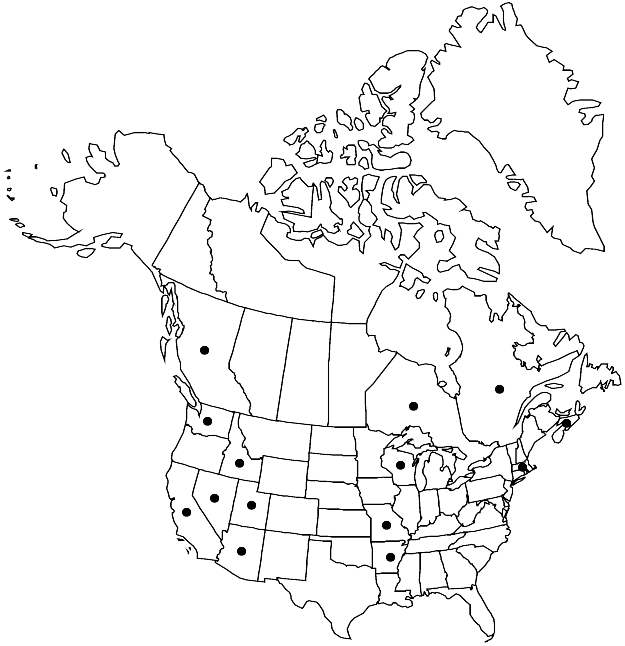Gemmabryum violaceum
Phytologia 89: 112. 2007.
Plants small, green, yellow-green, often reddish. Stems 0.4–1(–1.5) cm; rhizoids pale to bright violet, purple, or rarely red-purple. Leaves loosely set, ovate-lanceolate, weakly concave, 0.4–1(–1.5) mm; base not decurrent; margins plane to weakly revolute basally, entire to serrulate distally, limbidium absent; apex acute; costa short-excurrent, awn slender; alar cells similar to adjacent juxtacostal cells; proximal laminal cells abruptly quadrate to short-rectangular, 2–4:1; medial and distal cells (30–)40–60 × 8–14 µm, 3–4:1. Specialized asexual reproduction by rhizoidal tubers, on long rhizoids in soil, purple-red or rarely orange, irregularly spheric, 60–80(–100) µm, cells 25–30 µm, smooth. Sexual condition dioicous. [Capsule nutant, 1–3 mm].
Phenology: Capsules mature Apr–Jul (spring–summer).
Habitat: Damp soil, soil over rock, disturbed sites
Elevation: low to moderate elevations (0-1000 m)
Distribution

B.C., N.S., Ont., Que., Ariz., Calif., Idaho, Mass., Mo., Nev., Utah, Wash., Wis., s South America (Argentina, Chile), Eurasia, Atlantic Islands (Tenerife), Pacific Islands (New Zealand).
Discussion
Gemmabryum violaceum is distinguished by the combination of violet rhizoids and small, spheric, red to purple-red or orange rhizoidal tubers. Gemmabryum ruderale is similar but has larger tubers, and European material at least has strongly papillose rhizoids compared to relatively smooth rhizoids of G. violaceum.
Selected References
None.